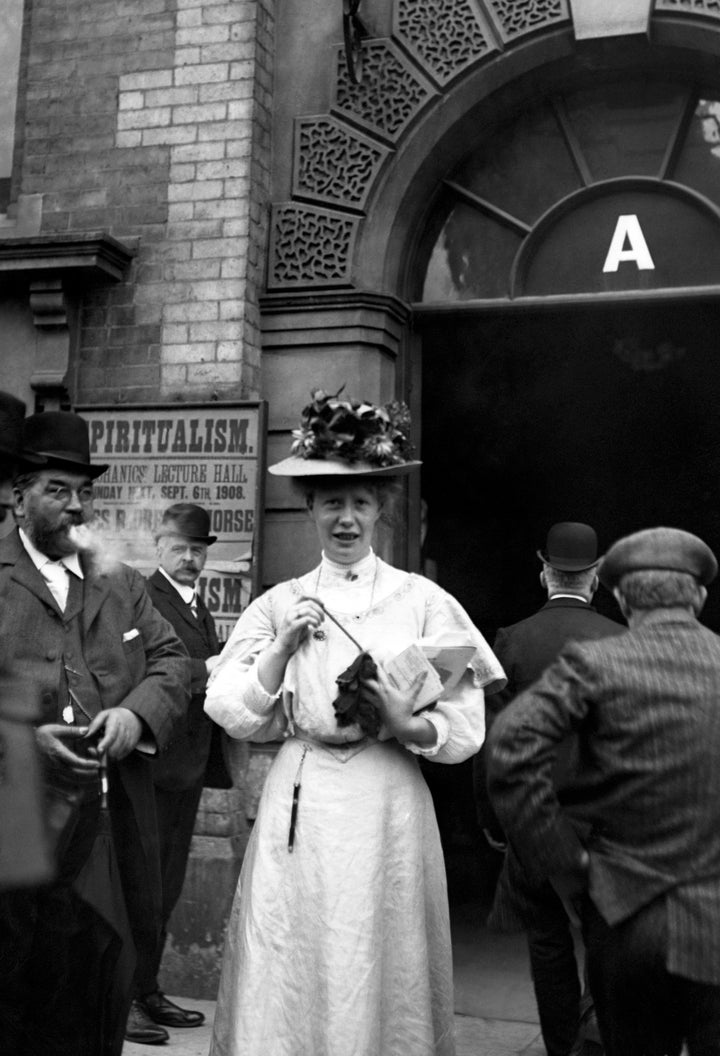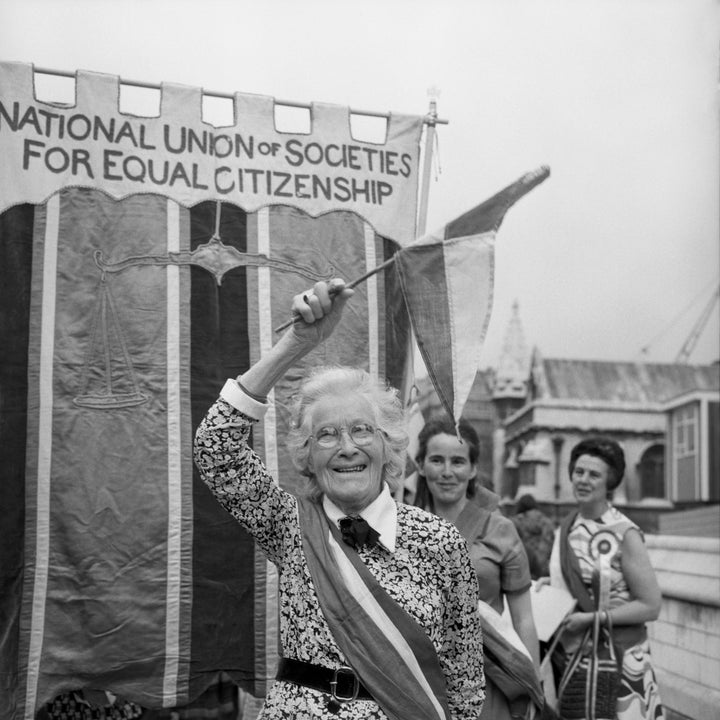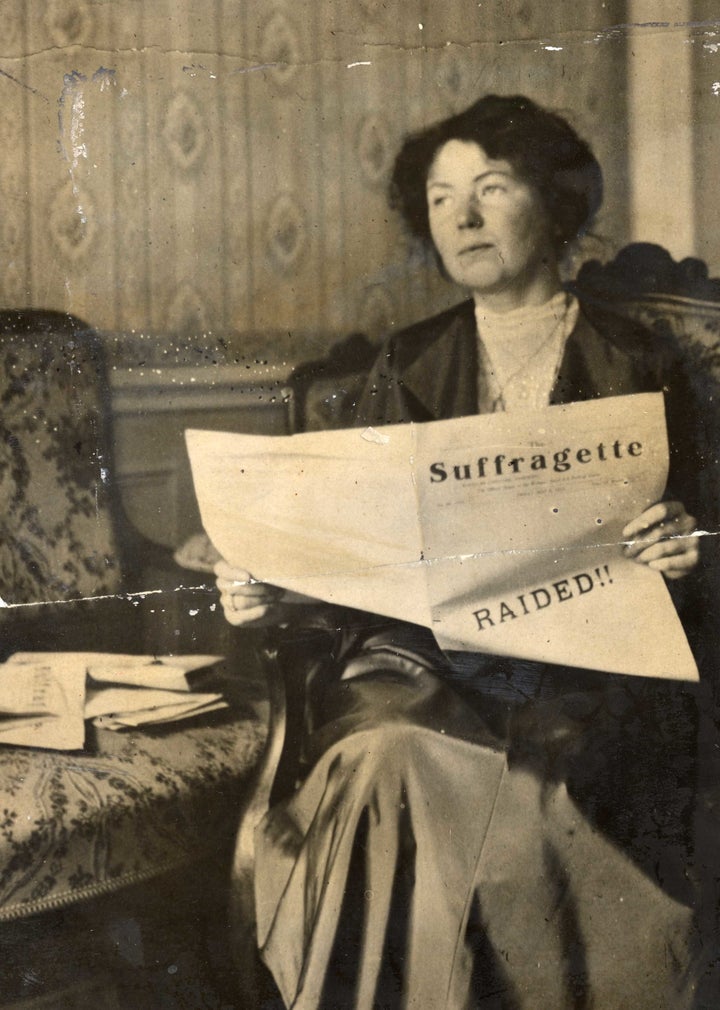“I do not apologise for my sex.”
This was the rallying cry of Mary Macarthur, a Labour party candidate who made history in 1918 as one of the first women to run for political office in the UK.
Macarthur promised to voice the “aspirations” of women workers. She joined 17 other female candidates who stood in the general election that year, after the passing of a new law allowed women to become MPs if they were over 30 and owned a certain amount of property.
This week marks 100 years since the first UK general election in which (some) women could stand as MPs. Though only one was successful, it was the trailblazing start to electoral equality.
With a background in the trade union movement, Macarthur said her campaign was financed by the “pennies” of female workers around the country, and she made equal representation a key part of her message to voters in Stourbridge.
“In the new parliament, where laws affecting every household in the land will be framed, the point of view of the mother as well as the father should find expression,” she said. “It takes a man and a women to make the ideal home and I believe neither can build the ideal world without the help of the other.”

Their entry into political life was happening at a major turning point, after the end of the first world war, when women were breaking away from a life of domesticity and the suffragettes were campaigning vociferously for change.
Another of the women who ran for office on December 14, 1918 was suffragette Eunice Murray, who stood as an independent in Bridgeton, Glasgow.
In her campaign, she made a moving case for parliament’s better reflection of the very country it represented. “I am standing for parliament because I want to assert to the fullest extent the right of every citizen, regardless of sex, to fill positions of trust and to share in the work and the government of the country; and because I am convinced that the country will benefit inestimably by the representation of the women’s point of view in parliament.”
Emmeline Pethick-Lawrence (pictured below) stood in Rusholme for the Labour Party. In what she described as a “special letter to women voters”, she said it was the time for people to “let the world see what women can do now, when they have the chance”.
Pethick-Lawrence and her husband were prominent members of the Women’s Social and Political Union (WSPU) and she was imprisoned several times for her militant activities – though neither of the pair were connected with the 1912 WSPU window-smashing spree along Oxford Street.

Other women who made the brave step to run for office included Emily Frost Phipps, a former president of the National Federation of Women Teachers, who was an independent candidate in Chelsea. She told voters it was “desirable” to have women in politics, and asked people to follow the example of Canadian soldiers who had elected a woman.
Many women framed their suitability for office in terms of the men in their lives. Violet Markham, a Liberal candidate in Mansfield, stood in the seat previously held by her brother, who had died in the war.
She told voters her brother’s friends had persuaded her to campaign and that if elected she would give up her seat in a year, triggering a by-election so that returning soldiers who were not yet home from war could have the right to vote.
The one female Conservative candidate, Alice Lucas, also stood in place of a man in her life. Her husband died three days before the election, and the mother-of-five only had time to release a brief statement to the press before the vote in Kennington, London.
Margery Corbett Ashby (pictured below), who stood as a Liberal candidate for Ladywood in Birmingham, used a picture of her with her son on the front of her election address. She told voters she was the wife of a soldier still in Belgium and included a picture of him in military uniform with the slogan “A Soldier’s Wife For Ladywood”.

During the election, coalition prime minister David Lloyd George issued “coupons” for candidates who supported his government in the form of a letter of support signed by both Lloyd George and Andrew Bonar Law, leader of the Conservative Party. This was seen as being a mark of approval for those candidates.
Christabel Pankhurst, daughter of political activist and suffragette leader Emmeline, who stood for the Women’s Party in Smethwick, was the only woman to receive a coupon from the government. She was a former leader of the WSPU, but lost by just 775 votes.
In her election address, she emphasised that she supported a “victorious peace and national and imperial prosperity”.
She made a virtue of her gender, saying: “As a woman member of parliament, I shall, if elected, give special attention to the housing question, because, as every woman knows, a good home is the foundation of all well-being.”

Just one woman was successful in getting a seat, of the 17 who ran in 1918 – Constance Markievicz.
She was a member of Sinn Fein, and in prison at the time, but as the Irish national party never take their seats in protest – she never came to Westminster.
She later became minister of labour in the first Dail, the independent legislature of the Irish republican movement.
Two years previously she had taken a lead role in the historic Dublin uprising which sowed the seeds of Irish independence and only avoided being executed because she was a woman.
It would take another year for the first female MP, Nancy Astor, to take her seat following a by-election in Plymouth in November 1919.

To mark the centenary of this historic election, a bronze statue of Emmeline Pankhurst was unveiled in her home city of Manchester on Friday.
The statue, by sculptor Hazel Reeves, captures the political activist balancing on a chair with one hand outstretched, calling on votes for women. Prior to the big reveal, marchers gathered near the People’s History Museum to converge collectively at the site.
Between 1898 and 1907, nearby 62 Nelson Street was the home of Pankhurst and her three daughters Christabel, Sylvia and Adela. Together, they championed women’s rights, founding the Women’s Social and Political Union in 1903.
The Houses of Parliament in London also marked the occasion with a major exhibition, talks and tours, plus other events around the UK to celebrate the voice of women in politics.
Though the first tranche may not have been successful, many hundreds of women who have held parliamentary office in the UK, including two female prime ministers, owe a lot to the trailblazing women of the 1918 election.

